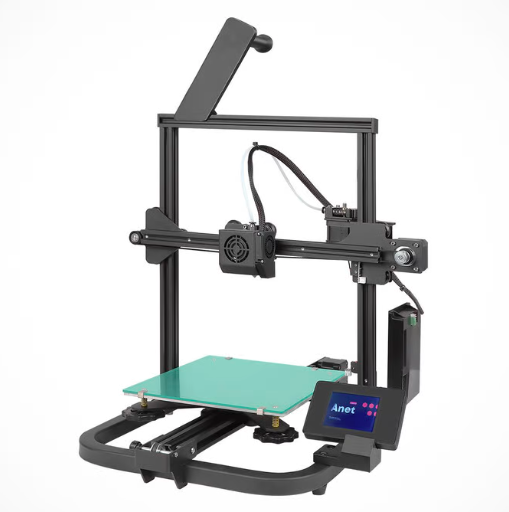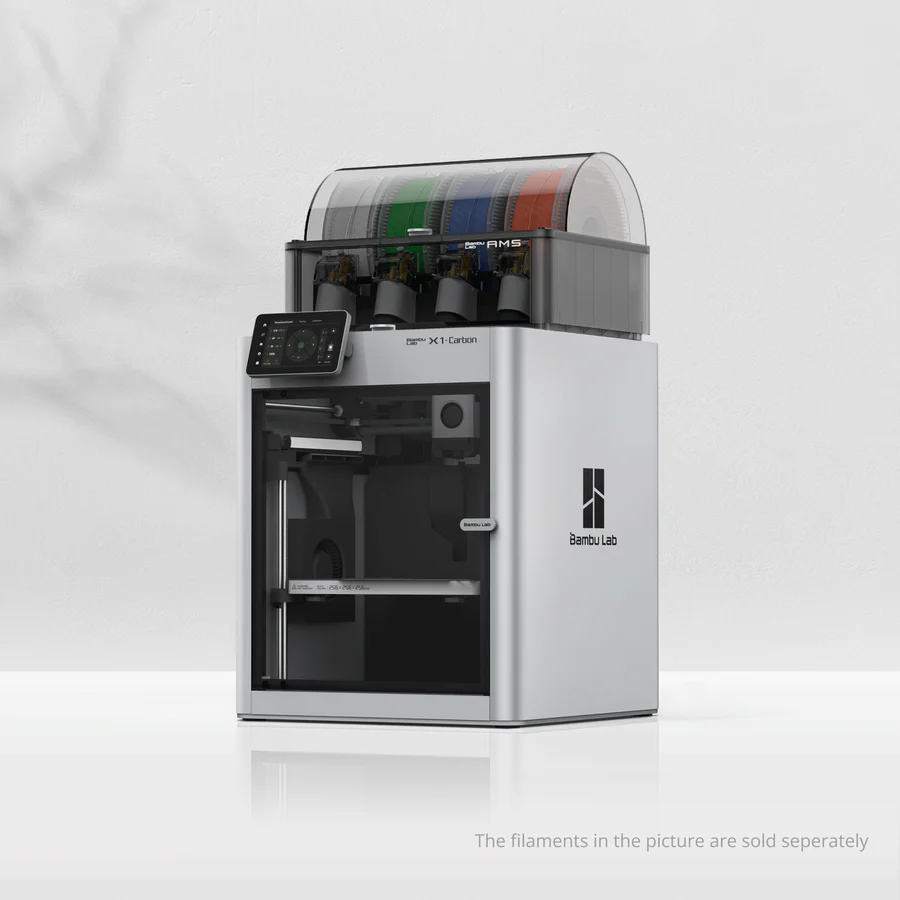Compare A8 V2 vs X1 carbon
Comparison between the best 3D printers
Choose the best 3D printer at the best price. The cheapest 3D printers are here.
Buy a 3D printer here with 3D Fila.
 |
 |
|
| Model | A8 V2 |
X1 carbon |
| Printing Material | Filament | Filament |
| Buy Filament for Anet A8 V2 | Buy Filament forBambu Lab X1 carbon | |
| Estimated price | $129,00 | $1449,00 |
| Manufacturer | Anet | Bambu Lab |
| Release Year | 2021 | 2023 |
| Print Volume [mm] | 220x220x250 | 256x256x256 |
| Printer Size [mm] | 428x441x486 | 389x389x457 |
| Weight [kg] | 6,2 | 14,13 |
| Power Loss Recovery | NO | YES |
| Enclosed printer | NO | YES |
| Bed Leveling | Manual | Automatic |
| Filament End Sensor | NO | YES |
| Bed type | Heated | |
| Power supply system | Bowden | Direct Drive |
| Standard nozzle | 0,4 | 0,4 |
| Maximum Nozzle Temperature [°C] | 230 | 300 |
| Maximum Bed Temperature [°C] | 120 | |
| Maximum printing speed [mm/s] | 150 | 500 |
| Filament holder | YES | YES |
| Camera for supervision | NO | NO |
| Recommended filaments | PLA | PLA, PETG, TPU, PVA, PA, PA-CF, Nylon, PC |
| Recommended slicers | Cura, Simplify, Slic3r, IdeaMaker | Bambu Studio, Super Slicer, Cura, Prusa Slicer, Orca |
| Maximum Resolution [mm] | 0,1 | 0,1 |
| Processor | Quad ARM A7 1.2 GHz | |
| Display | Display touchscreen 2,8'' | Touchscreen 5'' |
| Power Supply | 110/220V / 250W | 350 W |
| Connectivity | SD / USB | Wifi, Bambu bus, Cartão SD |
| Operating systems | Windows, Mac, Linux | Windows, Linux, Macbook |
| Date of registration in the system | 2022-11-10 | 2024-04-10 |
| Release date | 2021 | 2023 |
| Extra features | The Anet A8 V2 is a Cartesian-XZ type 3D printer with a build volume of 220 x 220 x 250 mm, Ender 3 design and V-slot assembly. It has a 32-bit motherboard and touchscreen interface, promising ease of use. It uses open source firmware and has thermal failure protection. It stands out for its cable organization and the absence of a heated bed, focusing on energy savings and PLA printing. It comes with an external power adapter, aiming at greater safety, especially for beginners and educational use. | The Bambu Lab X1 Carbon revolutionizes 3D printing with stunning design, high print speeds, and a streamlined user experience. It stands out with its CoreXY system, a hotend capable of reaching 300°C, allowing for a wide range of filaments. Its LiDAR-assisted bed leveling system, vibration compensation, and AMS multicolor printing capability raise the industry standard. Print quality is impressive, with the ability to fine-tune for perfection. The X1 Carbon, with its closed build volume, not only promises but also delivers one of the most advanced 3D printing experiences available to consumers. |
| Support for multiple colors and materials (AMS and CFS) | NO | YES |
Notes * |
||
| Cost-benefit | 6 / 10 | 7 / 10 |
| Hardware | 0.5 / 10 | 5.6 / 10 |
| Tela | . | . |
| Print volume | 3 / 10 | 4 / 10 |
| Performance | 1 / 10 | 4 / 10 |
Conclusion |
| In conclusion, the comparison between the Anet A8 V2 and the Bambu Lab X1 Carbon presents two distinct approaches to 3D printing, each catering to different user needs and budgets. The Anet A8 V2, with its lower price point, is an entry-level option ideal for beginners and educational environments, offering basic features like manual bed leveling and a relatively modest print volume. While it lacks advanced functionalities such as power loss recovery and automatic filament detection, it serves as a practical introduction to 3D printing, especially for those focusing on PLA materials. In contrast, the Bambu Lab X1 Carbon represents a significant leap in technology and performance, functioning as a premium solution for seasoned users who require versatility and speed. With automatic bed leveling, high-temperature capabilities, and support for various materials, it offers features that enhance the printing experience and output quality. The enclosed design ensures improved safety and print consistency, making it suitable for professional settings. Ultimately, potential buyers should consider their specific needs and budget constraints. The Anet A8 V2 is an accessible starting point, while the Bambu Lab X1 Carbon is an investment in advanced technology that promises superior performance and features for serious enthusiasts or professionals. |

